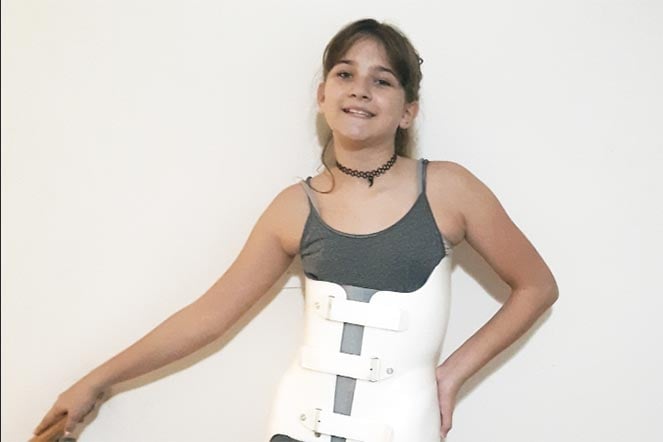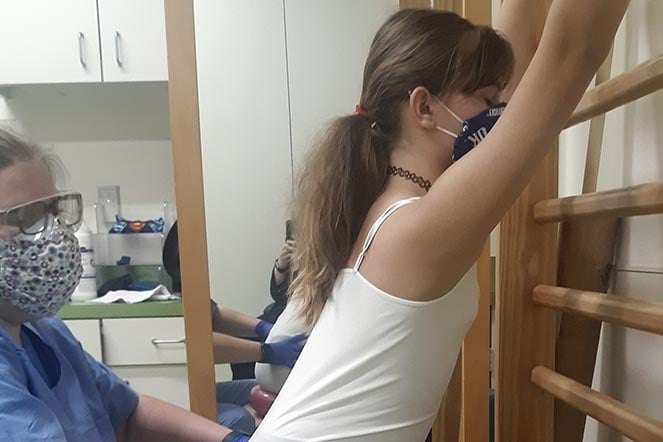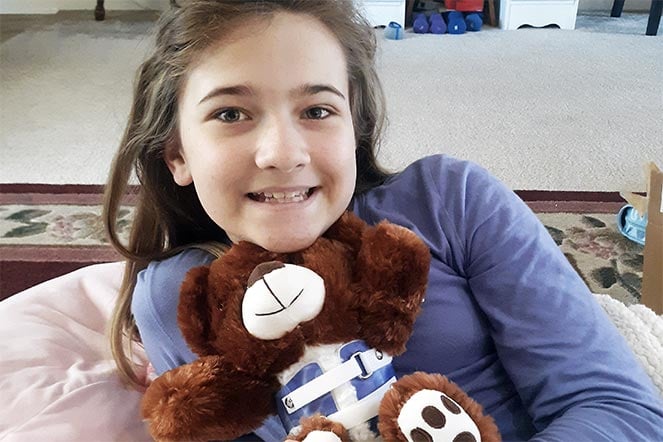Patient Compliance Makes All the Difference
Katie’s mom, Julie, said the physical therapy and Katie’s own compliance with brace-wearing made all the difference.
“She did all the exercises at her physical therapy appointments and then did them five days a week at home too,” Julie said. “When you put it all together — her doctor’s care, her brace compliance, the PT — it has had a significant impact, cutting her curve progression down by half.”
Katie, who enjoys playing volleyball, painting, reading and coaching cheerleading, wore her brace 23 hours each day for more than two years, which she admits was challenging at times.
“I experienced some pain at first and the brace was hard to sleep in sometimes,” Katie said. “And no one really wants to wear a brace for practically the whole day. But, I realized that it’s a short-term problem to have for a long-term solution.”
Katie has some encouragement for other kids starting their brace-wearing journey.
“If you stick with it and put in the hours, you can get the results you need to feel better and move on with doing the things you love,” Katie said.
Julie said that, like many preteens, Katie felt that appearances were important, and sometimes the brace added to those stresses.
“She was dealing with some pain and already worried about body image at her age,” she said. “But it is amazing how well she’s done and how much all the care at Shriners Children’s has helped her.”
Katie said the support of her care team, family and friends has been a huge part of her treatment journey.
“I would tell any kid facing what I was, to surround themselves with people who love them and support them,” she said.
For those parents and caretakers facing a scoliosis diagnosis, Julie had the same advice. There are plenty of resources, she said, including Shriners Children’s.
“Take a deep breath, educate yourself and ask a lot of questions,” she said. “I can’t say enough great things about Shriners Children’s Lexington. They answered phone calls from a panicked mother with infinite questions. They recommended special shirts and creams to help Katie be comfortable. They wrote school notes to help her avoid embarrassment. There was support and tremendous patience from the prosthetics team with making adjustment after adjustment to get her comfortable, and explaining everything along the way. And then our physical therapist, Margaret, she was there from the get-go in a big way.”
Katie recently completed her treatment regimen, and will only need to visit for check-ups every six months to monitor her curve. Today, Katie said she sees a definite improvement in her posture, and feels great.
“I wish I could tell my younger self that I’d get to this point,” she said. “It can be stressful and scary, but Shriners Children’s and my supportive circle helped me through.”







